I am interested in summarizing several outcomes by sample categories and presenting it all in one table. Something with output that resembles:
| vs | am | |||
|---|---|---|---|---|
| cyl | 0 | 1 | 0 | 1 |
| 4 | 1 | 10 | 3 | 8 |
| 6 | 3 | 4 | 4 | 3 |
| 8 | 14 | 0 | 12 | 2 |
were I able to combine ("cbind") the tables generated by:
ftable(mtcars$cyl, mtcars$vs)
and by:
ftable(mtcars$cyl, mtcars$am)
The crosstable() and CrossTable() packages showed promise but I couldn't see how to expand it out to multiple groups of columns without nesting them.
As demonstrated here, ftable can get close with:
ftable(vs + am ~ cyl, mtcars)
except for also nesting am within vs.
Similarly, dplyr gets close via, e.g.,
library(dplyr)
mtcars %>%
group_by(cyl, vs, am) %>%
summarize(count = n())
or something more complex like this
but I have several variables to present and this nesting defeats the ability to summarize in my case.
Perhaps aggregate could work in the hands of a cleverer person than I?
TYIA!
